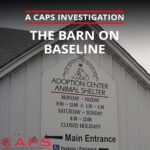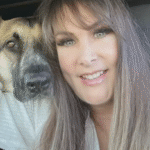Breeder: Dwayne Hurliman
Address: 11956 N 2270 Rd
City, State Zip: Cordell, OK 73632
Year: 2015
USDA License: 73-A-2621
Date of CAPS Investigation: 05/25/15
Time of CAPS Investigation: 12:05pm
CAPS investigation: 5/25/15; kennel visited at 12:05
Weather at time of investigation: 71 degrees Fahrenheit and overcast
Breeds: Yorkshire Terriers, Shih Tzus, Maltese, Beagles, Shiba Inus, Pugs, Miniature Schnauzers, Poodles, Bichons, Pomeranians, Boston Terriers, Corgis, West Highland Terriers, Akitas
Approximate number of dogs observed at time of investigation: 1000 dogs, 150 puppies
Dwayne Hurliman (Caucasian male, about 45 years old, 6’4”, 220 lbs., with short brown hair) claimed he had 400 to 500 dogs; however, it was apparent to me, after he showed me his entire kennel, that he had approximately 1,000 dogs. Dwayne told me that most of his puppies are sold to pet stores. He also told me that he tries to breed his dogs every cycle, but that they tend to sometimes skip on their own and that the breeders average three litters every two years. He also said he has focused on having breeders that will have large litters of puppies.
Sundowner buildings general description
The facility had 12 Sundowner kennel buildings, each with two rows of indoor/outdoor cages, one set over the other, on each of two sides of the buildings. There were five to six cages per row, made of treated wire. These cages had self-feeders and water nipples on their indoor portions and plastic sheeting underneath the cages to catch manure. Two of the barns had whelping cages with whelping trays and heating lamps on indoor cages. Each breeder cage held three to four dogs of various small breeds.
Crowded cages
One cage held four Poodles, each dog about 14” long, so that the required cage space was just over 11 square feet of cage space. However, there was about 10 square feet of cage space total for both cages (Sec 3.6 Primary Enclosures (c) Additional requirements for dogs (1) (i) Space). Dozens of cages held three dogs each, with each dog being about 16” long. This housing arrangement had dogs too large for the cage space, which was 0.083 square feet short of space required by regulation (Sec 3.6 Primary Enclosures (c) Additional requirements for dogs (1) (i) Space). Also, there were hundreds of smaller dogs in cages that were just within the regulatory minimum space requirements.
Damaged cages
The tops of several outdoor cages on the side of one Sundowner kennel were bent in. On the bottom row, in a cage containing four Poodles, the cage was bent in about three inches where the top edge of the cage wire wall and ceiling met. In addition, the center of the ceiling area above the cage was collapsed about two inches (Sec 3.1 Housing Facilities, General (a) Structure; construction). Further, the center of the ceiling above an adjoining cage containing three Miniature Schnauzers was bent in about two inches (Sec 3.1 Housing Facilities, General (a) Structure; construction). An adjacent cage containing three Shih Tzus was damaged such that a back corner of the ceiling above it was bent down about four inches, and the walls and ceiling gradually bent down along an angle to the lowered corner (Sec 3.1 Housing facilities, General (a) Structure; construction). Two top outdoor cages in the same building had similar damage. Each cage contained three dogs that were a Maltese/Yorkie mix. On both cages, the center point where the ceiling met the outer cage walls was bent down between 1.5 to 2 inches, as though something had hit the cages and partially damaged the walls (Sec 3.1 Housing Facilities, General (a) Structure; construction).
Beagle/Akita cages
About thirty outdoor pens, arranged in three rows, were at the far end of the kennel opposite the residence on the property. Each pen held three Beagles or Akitas. The pens had concrete floorings, wire walls, and metal roofs. The treated wire floorings of the pens had feces mashed throughout their surfaces and were stained so badly they appeared to be never cleaned (Sec 3.11 Cleaning, Sanitization, Housekeeping, and Pest Control (a) Cleaning of primary enclosures). There were dog houses at the backs of these pens, with metal self-feeders and water buckets attached to the walls. The pens were elevated six to 24” above the ground on metal platforms, and Dwayne said he uses a tractor to haul the platforms off and clean manure out from under them. There appeared to be several days’ worth of feces built up and washed by rain into thick puddles below the cages (Sec 3.11 Cleaning, Sanitization, Housekeeping, and Pest Control (a) Cleaning of primary enclosures).




